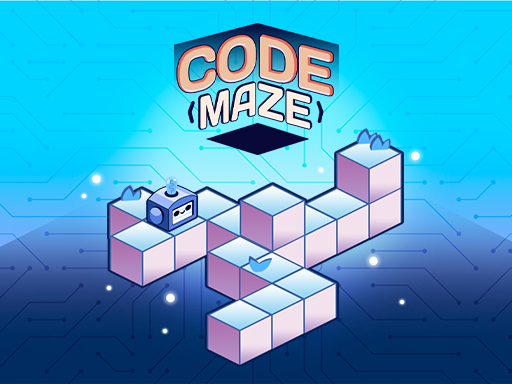HTML code to insert this game on your website
<iframe src="https://blockbreaker.net/game/code-maze.html" width="100%" height="600" scrolling="none" frameborder="0"></iframe>Code Maze Game Online: Bridging Programming and Play

Exploring the Fusion of Code and Gaming: Development and Educational Value
In the digital age, maze games captivate global players with their unique blend of logical challenges and entertainment. By integrating programming technologies (like HTML, CSS, and JavaScript) with educational principles, developers have created versatile online maze games that serve both recreational and educational purposes, enhancing coding skills and problem-solving abilities. This article explores the allure and potential of online maze games through three lenses: technical implementation, educational applications, and innovative gameplay.
Technical Implementation: From Basics to Dynamic Generation
The core of online maze games often relies on front-end development’s “holy trinity”: HTML (structure), CSS (styling), and JavaScript (logic). For instance, JavaScript handles player movement (via keyboard input) and collision detection. A typical implementation includes:
- HTML Structure: Defining maze containers, player elements, and exit markers.
- CSS Styling: Using grid layouts and pseudo-elements (e.g.,
::after) to render maze walls, with dynamic color-coding for players and goals. - JavaScript Logic: Employing event listeners for keyboard inputs, calculating movement boundaries via coordinates, and updating player positions in real time.
Advanced versions incorporate dynamic maze generation. Algorithms like recursive division create randomized paths, while Depth-First Search (DFS) or Breadth-First Search (BFS) enable auto-solving features. These techniques not only boost replayability but also provide practical examples for coding education.
Educational Applications: Coding Literacy and Logic Training
Online maze games are ideal tools for programming education. Platforms like Code.org’s “Classic Maze” use visual block-based coding (similar to Scratch) to guide players in navigating obstacles, teaching core concepts like loops and conditional statements. Tools like ScratchJr and Kodable leverage maze challenges to help children grasp algorithmic logic.
In higher education, maze games teach computational thinking. For example, the Programming Maze Game by the Association of Computing Engineers (ACE) requires players to write code to navigate complex paths while optimizing program efficiency. Such exercises cultivate not only coding proficiency but also awareness of resource management and time complexity.
Innovative Gameplay and Emerging Technologies
Modern online maze games transcend traditional formats through creative twists:
- 3D Mazes and Multi-Perspective Navigation: Projects like Google Chrome’s World Wide Maze convert web pages into 3D labyrinths, where players steer a ball through dynamically generated “web terrain” using phone gyroscopes or keyboards.
- Time Limits and Dark Mode: Games like LevelDevil challenge players to complete mazes under time constraints or with limited visibility (“dark mode”).
- Cross-Platform Collaboration: Some games enable multi-device synchronization (e.g., phone-PC linkage) or collaborative coding to solve maze puzzles.
Future Trends: Deeper Integration of Education and Play
As technology evolves, online maze games will increasingly leverage AI (e.g., dynamic difficulty adjustment) and virtual reality (VR) for immersive experiences. Educational institutions could design customized curricula, embedding coding challenges within mazes—for instance, requiring players to modify levels through code.
Whether as an entry point for coding novices or a sandbox for advanced developers, Code Maze Game Online exemplifies the limitless potential of blending technology and creativity. By engaging with these games, players not only enjoy puzzle-solving thrills but also acquire critical skills for the digital era.
References:
- Technical implementation examples (HTML/CSS/JavaScript, maze algorithms)
- Educational platforms (Code.org, ScratchJr, Kodable)
- Innovative tools and projects (World Wide Maze, LevelDevil)
| Published | 2025-03-12 16:35 |
| Game Type | html5 |
| Game Subtype | Construct 3 |
| Screen Orientation | Landscape |
| Game Size | 1280×720 |
| Game languages | English |

Comments (0)